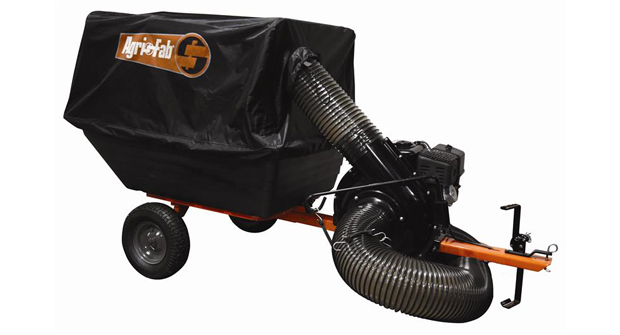So many factors affect the success of a landscape maintenance business, it’s hard to know where to begin. Those looking to maximize on-the-job efficiency may want to take a closer look at their mowing and landscape maintenance crew sizes. It’s just one aspect of an operation, but with the potential to impact everything from route density to equipment needed on a job, mowing crew size creates a powerful ripple effect that can either help or hurt your bottom line.
Jeff Garner is the owner of Garner’s Northwest Landscaping in Anacortes, Wash. Garner left the business to work in finance then returned nine years ago. When he did, he strove to pinpoint the company’s optimal crew size.
“The optimal size for the majority of our routes was two guys,” he says.
Garner decided to experiment with mowing crew size again this year. From January to May, Garner’s Northwest tested one-man crews on one of its busiest routes. The result? Up to two man-hours of drive time per day were eliminated, and the company’s revenue per hour rose substantially. But there were problems.

“My thought was that one guy would be much faster than two guys, and that was correct in terms of travel time,” Garner says. “But the quality of the work wasn’t as good. In the end, the improved efficiency on the revenue side didn’t balance the impact on quality.”
Garner isn’t sure why quality suffered. He surmises it’s because fewer people were on site to spot problems. Whatever the reasons, two-man crews “are the optimal way for us to go,” he says. Typically the two-man crews divide the work; one starts mowing and the other starts trimming, depending on the size of the property.
Garner’s Northwest sticks to that number as much as possible, although for larger commercial accounts it puts up to five guys on a mowing crew. With $900,000 in annual revenue last year, Garner’s Northwest is 70 percent residential and 30 percent commercial.

Brock Bykerk, vice president of Caledonia, Mich.-based Bykerk Landscape Management, a company ruled by maintenance accounts, also uses two-man mowing crews on his properties. It’s a change from 10 years ago, when Bykerk Landscape Management ran three one-man mowing crews. As the company’s residential and commercial businesses grew, it had to hire more workers and increase its mowing crew size.
“I prefer it to be a one-man crew myself, from an efficiency standpoint,” says Bykerk, who once was among those one-man crews.
“Because when you’re talking man-hours, to get your money’s worth the two-man crew would have to do the job in half the time as one man. And that does not happen.”

Jonathan Pototschnik, owner of CitiTurf in Plano, Texas, would use fewer people on his crews if he could. But he’s experimented thoroughly with his crew size and is happy with the three-man crews he’s using now.
Today, residential accounts make up 95 percent of CitiTurf’s business. The company used to be a commercial business then shifted to residential. Along the way, it’s experimented with crew size many times. And whereas it ran four-man crews on most of its commercial accounts, three-man crews are a better fit for the residential properties it services today, Pototschnik says.
CitiTurf has used four-man crews for residential accounts and still uses them in inclement weather. But overall, four-man crews on residential accounts didn’t give Pototschnik the efficiency he sought. His man-hour rate fell as a result, he says.
What factors go into determining the best crew size?
Finding the right mowing crew size is “very, very big” for a landscape maintenance business’s success, Garner says. That’s because it’s closely linked to so many important factors—property type and size, the equipment on hand, a crew’s skill level and a foreman’s management ability, just to name a few.
“The size of the property is going to determine the type of equipment, which is going to determine the skill level you need and the number of people you need,” Pototschnik says. The type of property is an important consideration, too, he says, because residential and commercial clients often have different standards.
Having a balance between the number of crew members on the truck and the equipment riding in the truck with them is important. Garner saw that when he began timing his crews and observing them more closely earlier this year.
“You can’t get three mowers on a small yard, or then you’ll have a guy standing around not doing anything,” he notes. “It was very important for us to outfit the crews with the right equipment. We found that having the right equipment drastically improves efficiency.”
This year, Garner’s Northwest bought another 52-inch mower to share among its seven maintenance crews. “Now when they need a second big mower, they don’t end up standing around trying to fill their down time,” Garner says. “It made a huge difference.”
Garner estimates the purchase of the 52-inch mower has eliminated 30 minutes of unproductive time per crew, for a total of three or four hours a day.
The purchase of a fleet of 30-inch mowers didn’t hurt either, and the company is looking at a 3.5 percent increase in gross profit this year. “Most of that we attribute to having the right equipment and eliminating that down time,” Garner says.
Ideal scenarios
If Bykerk and Garner could afford to use one-man crews all the time, they would, they say. But Bykerk says he would have to double his equipment to make that happen, and Garner says he would have to invest in a quality inspector to oversee his crews.
For now, both men have found that two-man crews work best. Pototschnik, too, is happy with his three-man mowing crews. If he weren’t, he says, he wouldn’t wait to do something about it.
In an ideal world, Pototschnik says, far more skilled labor would be available, creating maximum on-the-job productivity. Until that happens, he says, business owners should make their equipment and trucks work harder.
“Labor is extremely expensive—labor’s a risk,” he says. “So you want to put most of your work onto your assets. You want to be running those mowers all day. You don’t want a mower sitting in a truck half the day.”

